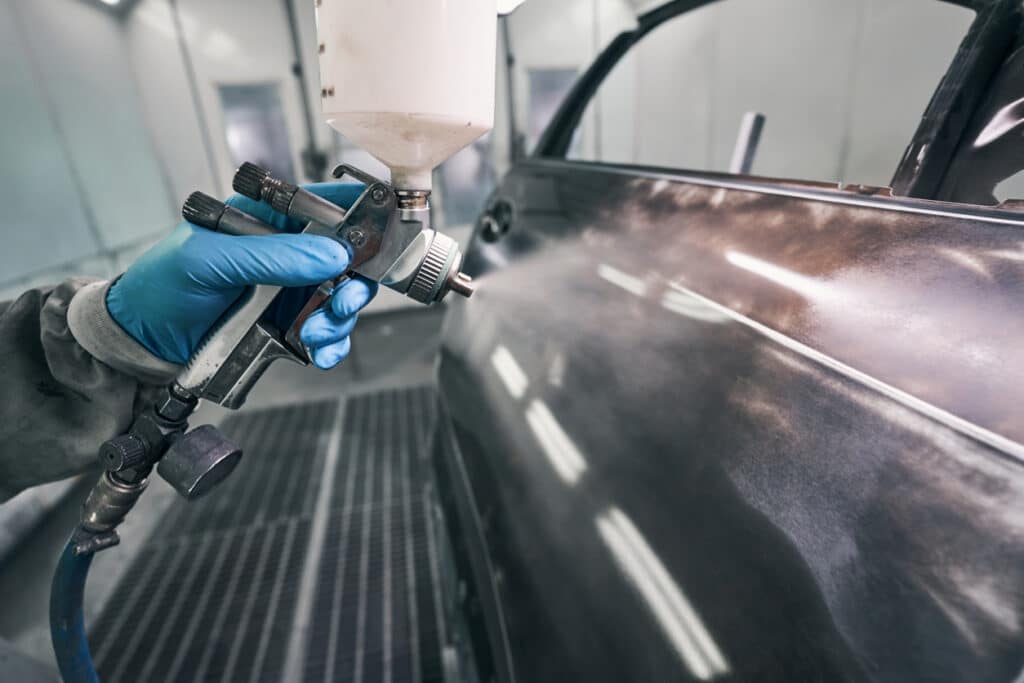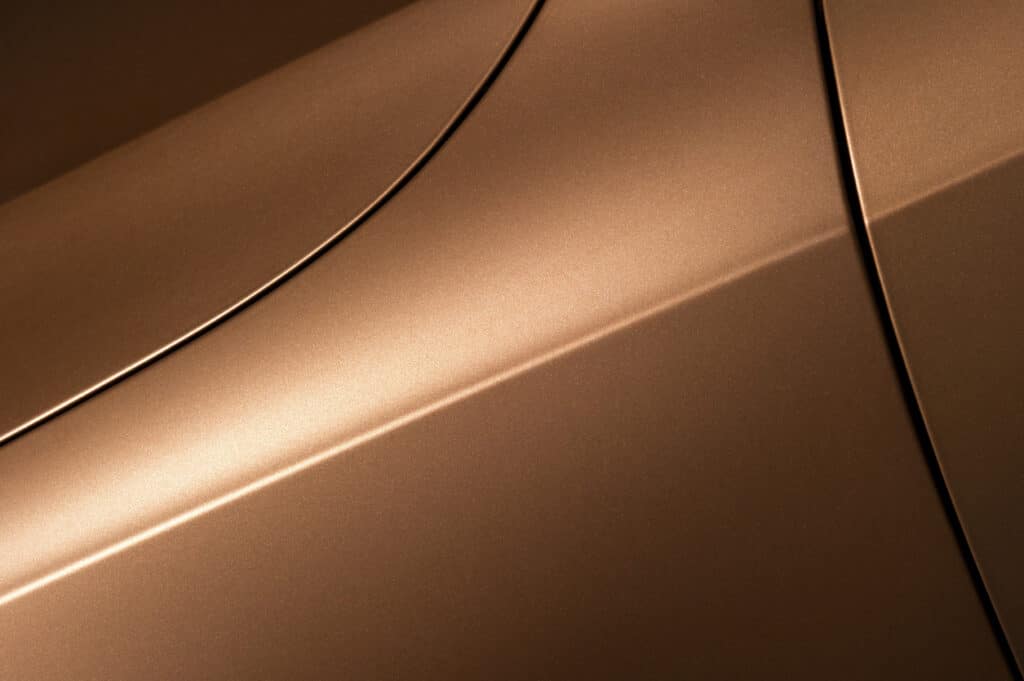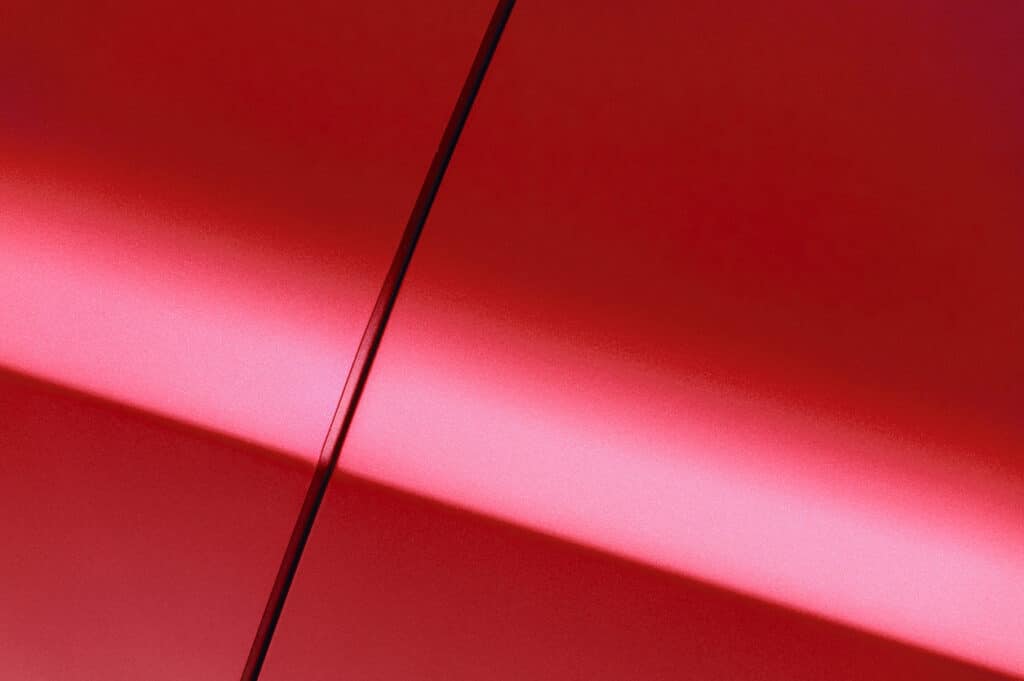How to Apply Metallic Automotive Paint
Metallic paints are a popular option for many higher-end vehicle models and are often offered as a no-cost option. However, if a customer wishes to change their car’s solid paint finish to a metallic finish, your paint specialists must be confident in achieving this. You should also be prepared to handle any necessary paint repairs for this type of finish.
Metallic paint must be handled and applied differently to achieve a high-quality finish both you and the customer will be happy with.
Here, we’ll be explaining the pros and cons of choosing metallic automotive paint, alongside offering our top tips for application and maintenance. Not only can this be a handy resource for your body shop team, but it can also help you explain the paint type to customers and advise them on whether it would be suitable for them.
Pros and Cons of Metallic Automotive Paint
Metallic automotive paint has its advantages and disadvantages. To assist you in advising your clients better, it’s important to provide them with a balanced explanation of everything involved in applying and maintaining metallic car paint. Below, we’ve outlined the positives and negatives of metallic car paint.
Pros
Starting with the positives, the huge range of colours available in metallic automotive paint can make it much easier to conceal small defects. This is because additional clear paint layers must be applied over the metallic paint, which adds further protection against things like stone chips and fading.
If the paint does become chipped, metallic paint can also sometimes mask the damage with its colour variations within the mixture. However, it’s important to remember that the darker the paint is, the easier it’ll be to spot damage. Lighter metallics such as grey and silver are often best if the customer is worried about damage showing clearly.
The shine that metallic automotive paint can give a vehicle’s surface is one of its biggest advantages and is the reason that many vehicle owners choose this finish. The aluminium powder fragments contained within metallic paint can reflect light, resulting in a shining and sparkling appearance, even on overcast days.

Cons
One of the biggest downsides customers will notice is that dirt can be far more obvious on a metallic finish than on a solid one. As a result, more frequent cleaning is needed, and customers must be prepared for this.
Another disadvantage to metallic automotive paint is that it can be marked easily. Seemingly normal car maintenance tasks like polishing and washing can leave swirl and brush marks on the surface, and over time, these will become increasingly obvious. Without proper knowledge of how to look after this type of paintwork, regular paint reworking can be needed which will end up being costly for your customers.
On the topic of paint repairs, these can be more difficult for your paint specialists to handle. Achieving an exact paint match is nearly impossible since each metallic paint will have slight variations in the mixtures. Additionally, labour requirements are higher with this type of paint since multiple applications and several layers of clear lacquer are needed.
How to Apply Metallic Paint on a Car
Learn the best technique for applying metallic automotive paint with our step-by-step guide below.
Clean and prepare
First, clean the vehicle’s exterior to remove any dirt or debris that could affect the finished result. Taking a clean sponge, mix car shampoo in a bucket of warm water and wash the entire vehicle being sure to pay close attention to any gaps or crevices. Then, dry the surface with a clean cloth to ensure all of the shampoo is removed from the surface.
Once the vehicle is clean, it’s time to assess its condition. If any scratches, dents or other defects are visible, these must be repaired before continuing. Whether you carry out spot repairs or SMART repairs, ensure the vehicle’s surface is defect-free.
The final step for preparation is to sand down the vehicle’s surface. Using circular motions, sand away the layers of existing paint and primer until they’re evenly removed. 400-600 grit sandpaper is typically best for this.

Mask off the vehicle
Anywhere that isn’t being painted should be masked off. For a full car body paint job, this will include the wheels, wing mirrors, windows, the front and rear windscreens and the fuel filler cap. This will protect the adjacent surfaces from overspray and save time on removing it.
Begin painting
Load the metallic automotive paint into the spray gun and begin spraying the surface. After each layer, allow it to dry fully and ensure you’re applying the paint as evenly as possible. Once you’ve built up enough layers, apply several coats of clear lacquer to seal it in and protect it.
More Application Tips for Metallic Paint
Metallic paint application isn’t the simplest process. Additional considerations are required from even the most experienced paint specialists.
Firstly, metallic paints commonly require multiple applications and then several layers of clear lacquer. This should be considered for time and resource purposes since you’ll need a larger volume of paint and more time. The cost will be higher for body shops as a result, which should also be communicated to your customers.
It’s also especially important to repair dents, chips and other defects before application. If these aren’t fixed, they’ll show through the metallic paint and lower the overall quality of the finish.
How to Correctly Maintain Metallic Automotive Paint
Cars with metallic paint require different maintenance since oxidisation is their greatest enemy. Therefore, it’s necessary to advise customers on the best, most effective ways to maintain this paint type.

Here are some top tips you should pass on to your customers when it comes to protecting their metallic paint from wear and tear.
- Protect your car from the sun and park it in the shade wherever possible.
- Use a good quality car cover but avoid leaving it covered for extended periods or in rainy weather. This can trap moisture on the car’s surface and increase paint oxidisation.
- Wash your car regularly to remove any harsh chemicals or debris that could break down the paint’s finish. Ideally, the car’s exterior should be washed twice a month. If the car is exposed to dirt and grit daily, it’ll need to be washed more often.
- Polish your car twice a year with a high-gloss polish. This will help remove existing oxidisation and prevent it from damaging the paint job. High-gloss polish is the best product to use on metallic paint because it brings out the shine from the different layers within the paint mixture.
- Wax your car every three months to maintain its shine and seal in the paint. Waxing will help protect the car’s exterior from minor dents and scratches, which should reduce the amount of paint touch-ups needed.
Whether you’re expanding your paint type offering or looking for ways to advise your customers better on their paint decisions, our guide is the perfect resource to refer to.
At JTAPE, we’re proud to offer professional standard automotive tapes for masking and protecting a variety of surfaces. To discover our full range, check out our product page.


